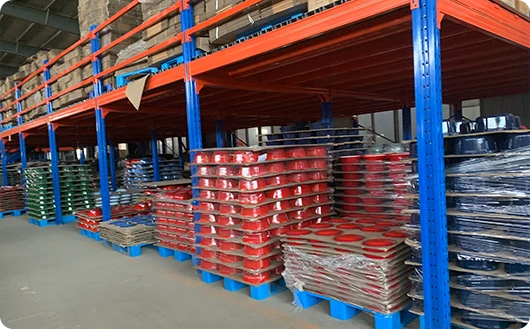
coating a cast iron skillet
Coating a Cast Iron Skillet A Step-by-Step Guide
Cast iron skillets are revered for their durability and excellent heat retention, making them a staple in many kitchens. However, to maximize their performance and maintain their longevity, proper coating and seasoning are essential. Here's a comprehensive guide to coating your cast iron skillet for ideal cooking results.
Understanding the Importance of Coating
The primary purpose of coating a cast iron skillet is to create a non-stick surface that prevents food from sticking, while also providing protection against rust and wear. The coating process involves seasoning, which refers to applying a layer of oil and heating it to create a durable, non-stick surface.
Selecting the Right Oil
The choice of oil is crucial for the seasoning process. Commonly used oils include flaxseed oil, grapeseed oil, and vegetable oil. Flaxseed oil is often favored for its high smoke point and ability to polymerize well, creating a tougher coat. However, any oil with a high smoke point can work effectively.
Step-by-Step Seasoning Process
coating a cast iron skillet

1. Clean the Skillet Start with a clean skillet. If it’s new, wash it with warm, soapy water to remove any factory residue. If it’s been used, scrub off any stuck-on food with a stiff brush or steel wool. Rinse thoroughly and dry completely.
2. Apply Oil Pour a small amount of your chosen oil into the skillet. Using a paper towel or a cloth, spread the oil evenly across the entire surface of the skillet, including the handle and the outside. Be careful not to apply too much; a thin layer is ideal.
3. Heat the Skillet Preheat your oven to 450°F (232°C). Place the skillet upside down in the oven to catch any excess oil drips. To protect your oven and catch drips, place a sheet of aluminum foil on the rack below the skillet. Bake for one hour.
4. Cool and Repeat After one hour, turn off the oven and let the skillet cool inside. For optimal results, repeat the oil application and baking process two to three times. This layering effect enhances the non-stick properties.
Maintenance Tips
To maintain the seasoning, avoid using soap when cleaning your skillet; simply wipe it with a damp cloth or rinse it with hot water. After washing, dry it thoroughly and apply a light coat of oil to protect it before storing.
In conclusion, properly coating and seasoning your cast iron skillet is an investment in its longevity and performance. With proper care, your skillet will not only serve you well for years to come but also develop a natural non-stick surface that enhances the flavors of your favorite recipes. Happy cooking!
-
Season Cast Iron Perfectly with GPT-4 Turbo TipsNewsAug.01,2025
-
High Quality Cast Iron Cookware - Baixiang County Zhongda MachineryNewsAug.01,2025
-
Premium Cast Iron Pan: Durable & Perfect HeatNewsAug.01,2025
-
High Quality Kitchen Durable Black Round Cast Iron Cookware Pancake Crepe Pan-Baixiang County Zhongda Machinery Manufacturing Co., Ltd.NewsAug.01,2025
-
Cast Iron Cookware - Baixiang County Zhongda Machinery | Nonstick, Heat ResistanceNewsAug.01,2025
-
High Quality Kitchen Durable Black Round Cast Iron Cookware - Baixiang County Zhongda Machinery | Non-Stick, Heat Retention, DurableNewsJul.31,2025


